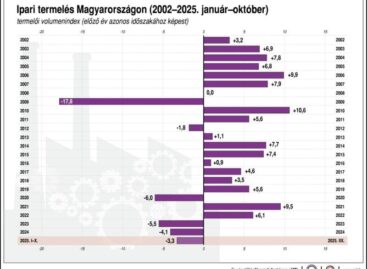FAO Cereal Supply and Demand Brief
FAO’s forecast for world cereal production in 2023/24 has been raised marginally and now stands at 2 841 million tonnes, marking a 1.1 percent (32 million tonnes) rise from the previous year’s level. This new revision rests on an upward adjustment to global maize production, reflecting the latest official estimates from the European Union, and to global wheat production, following recently released official data pointing to slightly larger harvests in Argentina and Australia. Likewise, following small upward revisions to production prospects for a few countries, FAO’s forecast for global rice production in 2023/24 now stands at 526.4 million tonnes (milled basis). This level represents a 0.5 percent annual production increase and matches the 2021/22 record harvest, reflecting prospects of an overall abundant crop in Asia as well as output expansions in Africa and the United States of America.

Pegged at 2 828 million tonnes, the forecast for global cereal utilization in 2023/24 is up 4.6 million tonnes from last month’s forecast and 36.4 million tonnes (1.3 percent) above the 2022/23 level. The global wheat utilization forecast for 2023/24, now set at 795 million tonnes, 2.0 percent above the 2022/23 level, has been lifted by 2.1 million tonnes from the previous month, mostly reflecting higher anticipated feed use in Argentina and other use in the United Kingdom of Great Britain and Northern Ireland. The forecast for global coarse grain utilization in 2023/24 has also been raised, by 2.5 million tonnes, reflecting a higher foreseen feed utilization of maize, especially in Mexico, and barley, largely in China and Morocco. This upward revision brings the global 2023/24 coarse grain utilization forecast to 1 509 million tonnes, up 1.5 percent from the 2022/23 level. World rice utilization in 2023/24 remains forecast to contract by 1.1 million tonnes year-on-year to 523.7 million tonnes, as a population-driven increase in food intake is expected to be outweighed by cuts in non-food uses of rice.
Despite a downward revision of 2.7 million tonnes from the previous month, FAO’s forecast for world cereal stocks ending in 2024 is now pegged at 894 million tonnes, still 2.3 percent above their opening levels. The world cereal stocks-to-use ratio in 2023/24 is forecast at a comfortable level of 31.0 percent, almost unchanged from the level of 30.9 percent in 2022/23. At 318 million tonnes, the forecast for global wheat stocks has been cut by 1.0 million tonnes, expanding the anticipated decline from opening levels to 2.0 percent. This downward revision is mostly attributed to an anticipated decline in inventories in the Russian Federation due to a higher export forecast. Pegged at 377 million tonnes, global coarse grain stocks are still predicted to rise above their opening levels, by 6.7 percent, despite a 2.1-million-tonne downward revision made this month stemming from expectations of lower inventories of maize, mostly in Argentina, the European Union and Mexico, and barley, almost exclusively in Australia. World rice stocks at the close of the 2023/24 marketing seasons are now pegged at 199.1 million tonnes, up slightly from the March forecast, largely due to an upward revision to reserves in Indonesia.
The forecast for world trade in cereals is lifted by 1.9 million tonnes from last month to 485 million tonnes in 2023/24, pointing to an 8-million tonne (1.7 percent) increase above the 2022/23 level. The global wheat trade forecast for 2023/24 has been raised by 1.2 million tonnes, reflecting expectations of higher export volumes by the Russian Federation and stronger import demand by the European Union, Thailand and the United Kingdom of Great Britain and Northern Ireland. Despite the upward revision, global wheat trade in 2023/24 is still predicted to decline from the 2022/23 level by 0.7 percent to 199 million tonnes. The forecast for world coarse grain trade now stands at 235 million tonnes, up 0.8 million tonnes from last month and 5.0 percent above the 2022/23 level. Accounting for most of this month’s upward revision, higher barley exports from Australia and larger barley imports by China and Morocco to meet domestic feed demand, lifted this month’s global barley trade forecast for 2023/24, further boosting the expected increase above the 2022/23 level. FAO’s forecast for global maize trade in 2023/24 remains overall unchanged, as a downward revision to imports by the European Union is offset by larger purchases by Mexico, Saudi Arabia and the United Kingdom of Great Britain and Northern Ireland. International trade in rice in 2024 (January-December) is still forecast to contract for the second successive year to 51.3 million tonnes, amid expectations of lower purchases by all regions, except for Europe and Latin America and the Caribbean.
Prospects for 2024 crops
Regarding the 2024 crops, FAO’s forecast for global wheat production has been scaled back slightly compared to the previous month, now standing at 796 million tonnes, but still marking an expected 1‑percent growth over the 2023 output. The recent downward revision reflects small cutbacks to wheat production forecasts in the European Union and the United Kingdom of Great Britain and Northern Ireland, where excessive wetness had curtailed wheat sowings, while localized dryness is affecting cropped areas in southern and eastern parts of the European Union. In the United States of America, despite a price-induced decline in plantings, the country’s total wheat production is still seen increasing in 2024 based on anticipated improved yields and a larger harvested area, underpinned by generally conducive weather conditions. In Canada, with the main spring wheat crop to be planted from May onwards, preliminary forecasts point to a likely decline in the sown area on account of thinner profit margins. However, a return to trend yields is foreseen to push production above the past five-year average. Conditions in Ukraine remain unchanged relative to the preceding month, as the war continues to weigh heavily on the sector and production prospects. In the Russian Federation, amid generally mild weather, wheat crops are faring well, and an above-average wheat output is forecast for 2024, albeit lower year on year. In Asia, conducive weather conditions are bolstering production prospects in India and Pakistan, and with remunerative prices supporting wheat plantings, bumper wheat outturns are likely in 2024. In Near East Asian countries, plentiful rainfall has benefited crop development and replenished irrigation water supplies, underpinning a favourable wheat production outlook in 2024, with crops to be harvested from May onwards. By contrast, substantial rainfall deficits and hot temperature across North Africa have degraded wheat crops with yields expected at low levels in 2024, following an already poor outturn last year.
For the 2024 coarse grain crops, sowing will begin soon in the northern hemisphere countries, while south of the equator the early-sown crops are already being harvested. In Brazil, the aggregate maize area is forecast lower year on year, and along with unfavourable weather conditions affecting key producing regions, a smaller maize output is foreseen in 2024 but still to remain above the last five-year average. Good rains are underpinning expectations of a rebound in maize production in Argentina following the drought-affected harvest in 2023. In South Africa, persistent low rainfall and high temperatures have led to a downgrade of production prospects, with the 2024 maize harvest expected to fall below the previous five-year average. Comparably dry and hot weather conditions are present in neighbouring countries, impairing yield prospects, with reduced harvests expected across Southern Africa in 2024.
Related news
Large companies expect easing inflationary pressures and decreasing public burdens
🎧 Hallgasd a cikket: Lejátszás Szünet Folytatás Leállítás Nyelv: Auto…
Read more >The GKI business climate index closed 2025 at a one and a half year high
🎧 Hallgasd a cikket: Lejátszás Szünet Folytatás Leállítás Nyelv: Auto…
Read more >KSH: industrial production decreased by 2.7 percent in October compared to the same period of the previous year, and increased by 0.5 percent compared to the previous month
🎧 Hallgasd a cikket: Lejátszás Szünet Folytatás Leállítás Nyelv: Auto…
Read more >Related news
The New Year’s Eve fireworks fair is back: temporary sales will start in department store parking lots at the end of December
🎧 Hallgasd a cikket: Lejátszás Szünet Folytatás Leállítás Nyelv: Auto…
Read more >The first Eastern European non-alcoholic beer turns 50
🎧 Hallgasd a cikket: Lejátszás Szünet Folytatás Leállítás Nyelv: Auto…
Read more >Sausage: pork prices are already going down, but they won’t be cheaper in stores – a significant correction may come in the spring at the earliest
🎧 Hallgasd a cikket: Lejátszás Szünet Folytatás Leállítás Nyelv: Auto…
Read more >






